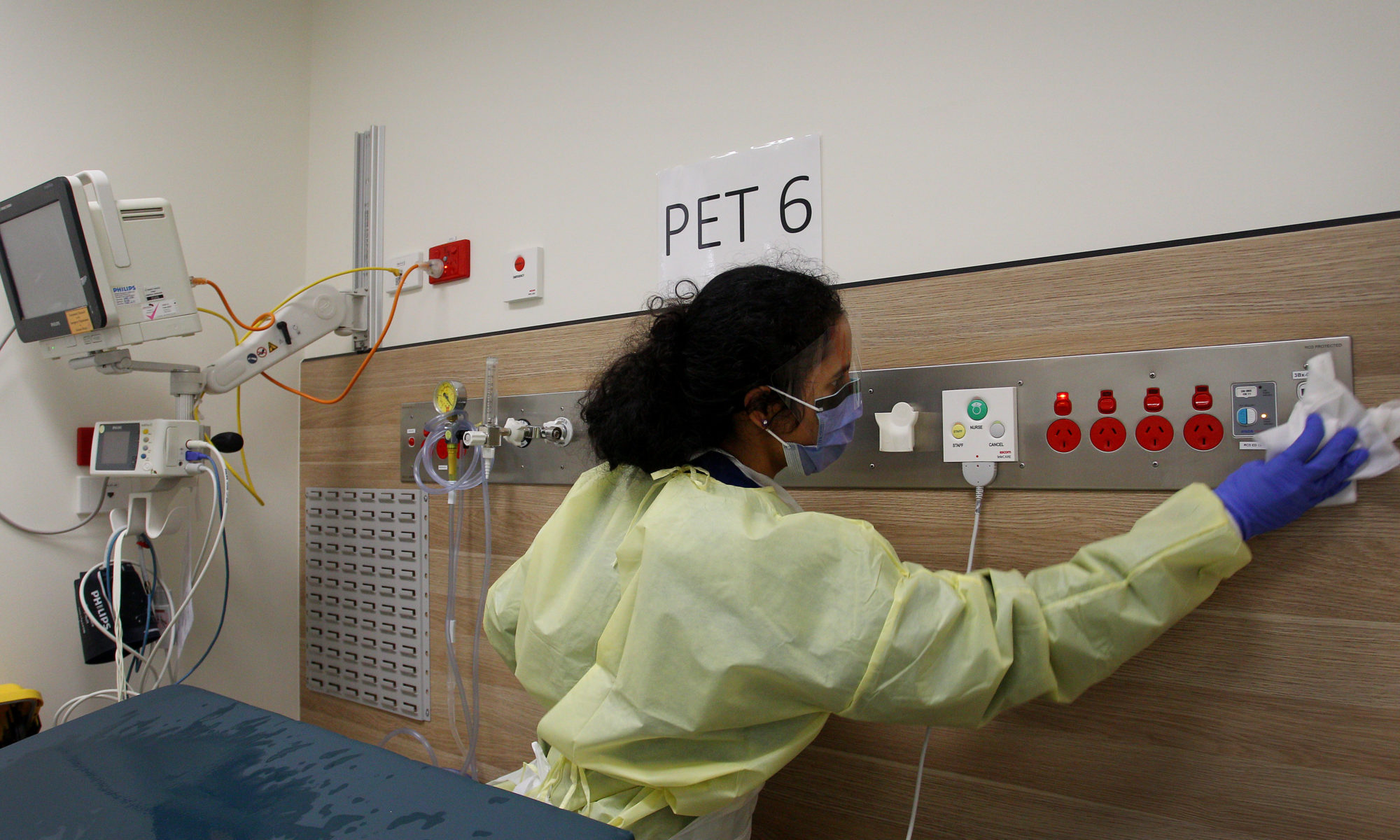Incorporating high-frequency cleaning into infection prevention strategy

How to balance increased protocols with staffing realities
By Medline Newsroom Staff | February 18, 2021
When a patient stays in the hospital, multiple people may come in and out of his or her room multiple times throughout the day.1 Doctors, nurses, patient transfer staff and visitors are all entering and exiting the room, practicing hand hygiene and touching different surfaces. But these surfaces typically are cleaned only once a day by environmental services.
“If you are sanitizing your hands, you should also be sanitizing the surfaces that you touch, at least the ones around the patient,” says Bevin McCain, senior EVS product manager, Medline. “Hand hygiene and surface cleaning should go hand in hand.”
Increased cleaning events combined with increased hand hygiene compliance can significantly reduce the risk of infection, according to research published in the American Journal of Infection Control.2 The answer cannot simply be to ask more of Environmental Services (EVS), since more staff, those team members can do only so much in a day. In fact, the key to making high-frequency cleaning work is looking at more than just EVS.
Here are some ways healthcare facilities can work to get everyone involved:
Taking a leadership-first approach
System or facility-wide initiatives like high-frequency cleaning need leadership backing to succeed. Consider creating a multidisciplinary leadership team that can collaborate and create a process that works across the entire system or facility.
Educating clinical staff
Getting clinical staff on board is critical. The team leading the high-frequency cleaning effort can educate clinical staff on when and where to use disinfectant wipes, according to McCain.
Improving patient and visitor awareness
Involving patients and visitors in high-frequency cleaning is an important step. Healthcare facilities can put up signs that detail how patients and visitors can help.
Using available resources
Take a look at who is available in your facility. Are there volunteers or staff members on light-duty work? Consider tasking these people with wiping down high-touch surfaces throughout the day.
For some facilities, reexamining their infection prevention protocols may also mean exploring innovative infection prevention tools, like UV disinfection systems. But adopting high-frequency cleaning does not necessarily mean facilities need to invest in the latest technology. Ultimately,
it is about reevaluating current strategy. “You just have to change your processes and your protocols to ensure rooms are being cleaned more often throughout the day,” says McCain.
Learn more about how Medline helps health systems and facilities prevent infections.
This article originally appeared in Issue 12 of Threads.
REFERENCES
- “Frequency of Patient Contact with Health Care Personnel and Visitors: Implications for Infection Prevention.” The Joint Commission Journal on Quality and Patient Safety. December 2012. https://pubmed.ncbi.nlm.nih.gov/23240264/.
- “Estimating the Effect of Hand Hygiene Compliance and Surface Cleaning Timing on Infection Risk Reductions with a Mathematical Modeling Approach.” American Journal of Infection Control. December 2019. https://pubmed.ncbi.nlm.nih.gov/31331717/#:~:text=A%20 15%25%20increase%20in%20hand,risk%20benefits%20of%20combined%20interventions.
Medline Newsroom Staff
Medline Newsroom Staff
Medline's newsroom staff researches and reports on the latest news and trends in healthcare.
